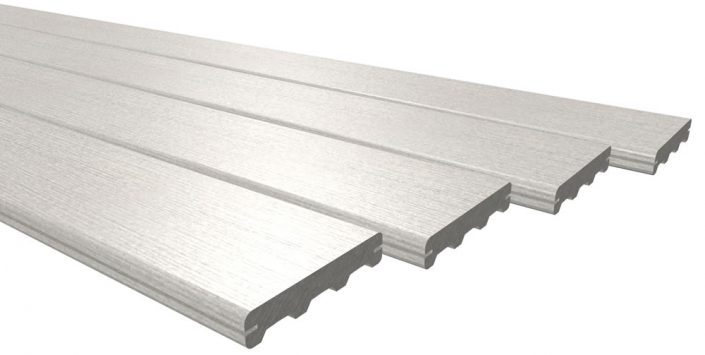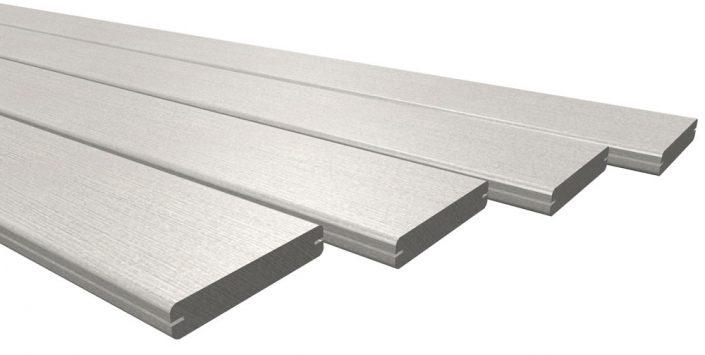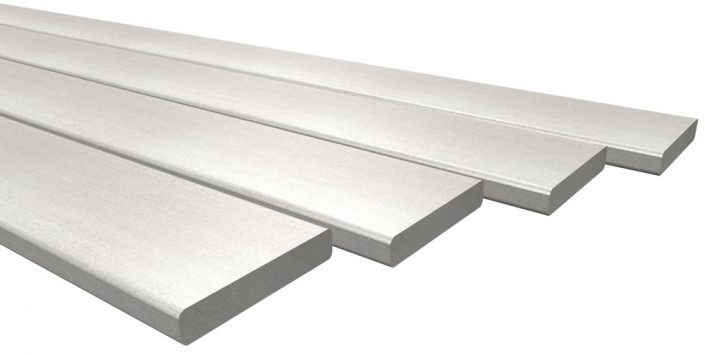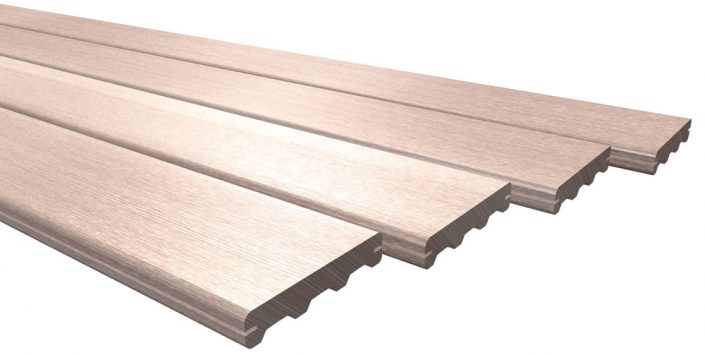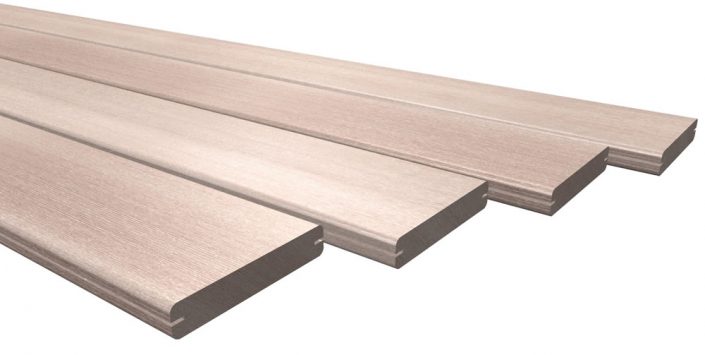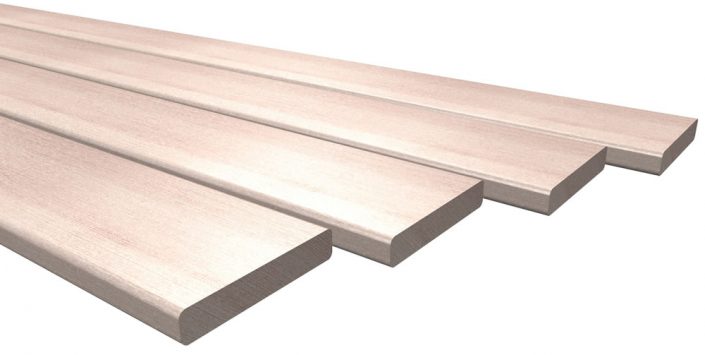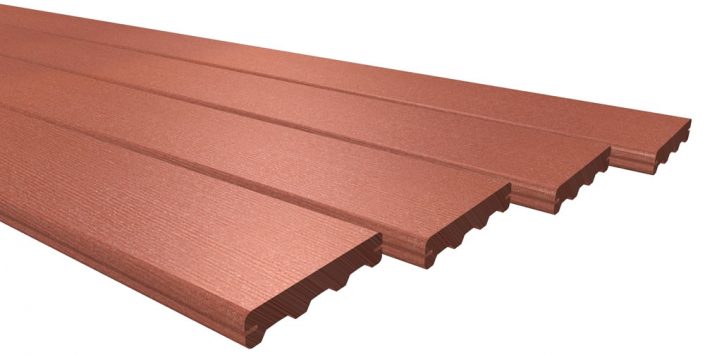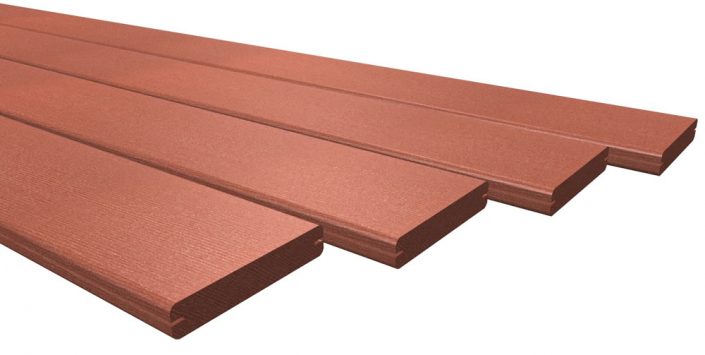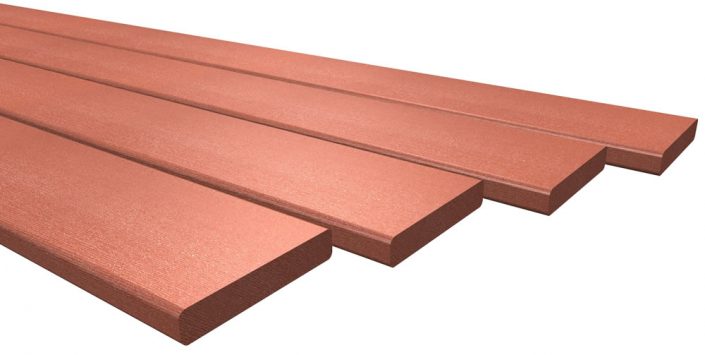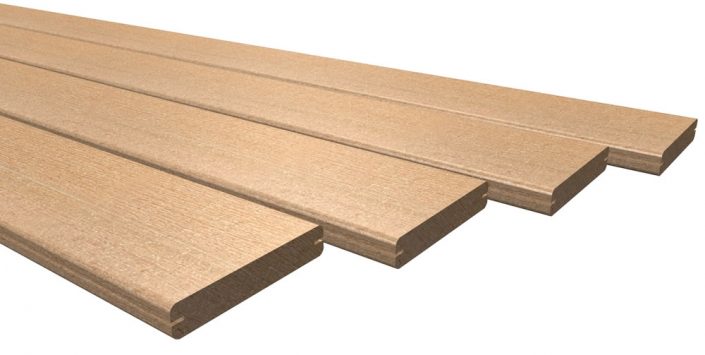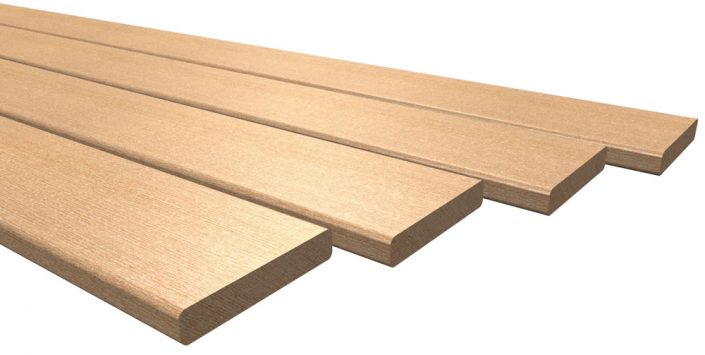What is Latitudes Composite Decking made of?
Latitudes decking is fortified with the proven Strandex technology, using a mixture of recycled wood fibres and post-industrial high density polyethylene.
What colours does Latitudes Decking come in?
Latitudes Decking is available in Ash Grey, Cedar, Redwood and Walnut, with a brushed finish on the face.
What size and length does Latitudes Decking come in?
Latitudes Decking boards are 136mm wide x 24mm thick x 5.8 & 5.4 metre lengths.
Should I purchase all of my decking material at one time?
Yes. Purchasing all required decking material at one time is recommended as manufacturing runs can produce slightly different colours. Like most composites, individual Latitudes Decking boards will have slight colour variations from piece to piece. This is due to the natural variations in wood fibres and polymers. Colour variation is not covered by warranty. We recommend purchasing extra material in case boards need to be repaired or replaced in the future.
What is the benefit of using solid composite decking over hollow composite decking?
It is easier to work with a solid product, because it frames like wood and feels more substantial on the deck.
What is the benefit of using Latitudes Slotted Decking over standard composite decking?
Latitudes Slotted Decking comes with a pre-machined groove along the sides of the board to accommodate the Equator hidden fastener. The Equator hidden fasteners are designed to properly space the boards at 6mm and allow for the expansion and contraction on the length and width that naturally occurs on composites. The screws provided with the Equator hidden fasteners have black painted heads to greatly reduce the potential glare caused by the sun, keeping the fasteners truly hidden.
What is the difference between Latitudes Composite Decking and wood?
Latitudes Decking combines the look of wood with the durability of plastic. Unlike wood decks that require continuous maintenance, there is no need to apply weather protectants or water seal products to Latitudes Decking.
Why is composite decking more expensive than treated wood?
Composite decking is more expensive to manufacture. However, over time, the maintenance, repair and/or replacement costs associated with wood outweigh the initial investment in a Latitudes deck.
Does Latitudes provide good traction in wet or dry conditions?
Yes. Latitudes Decking has good slip resistance in both wet and dry conditions.
(Tested: AS/NZS 4586:2004, Appendix A. Result: Class W)
How should Latitudes Decking be stored and handled?
You can store them the same way you would store any wood product.
Does Latitudes Decking fade?
Yes. Latitudes Decking will lighten over time to a beautiful weathered tone within the same colour family. This colour tone shift is dependent upon exposure to sunlight and other environmental factors. The weathering process begins upon installation and is generally complete within 60-90 days.
Will Latitudes Decking split, rot or decay like wood?
No. Latitudes Decking has been tested under accelerated weather conditions and is weather resistant.
How do varying weather cycles affect Latitudes Decking during installation?
Latitudes Decking performs well in varying weather conditions. During installation, it will contract only slightly in cold weather. In hot weather it expands. We recommend that the material is on the job site 48 hours prior to installation to allow it to acclimatise. Follow the spacing guidelines in the installation instructions to ensure proper room for expansion and contraction.
Will chlorine and other chemicals from a swimming pool damage Latitudes Decking?
While no tests have been done, we have not seen or heard of any ill effects from standard pool chemicals.
Do I need special tools to install Latitudes Decking?
Conventional tools can be used with Latitudes for cutting, drilling and nailing. We recommend using a sharp carbide-tipped saw blade for cutting. For your safety, remember to wear protective clothing and safety glasses.
Can I hide the slotted deck board groove at the edge of the deck?
Several methods may be used to conceal the grooved board edges. This is easiest achieved by raising the edge board to cover the board edge. Another way is to ‘picture frame’ the entire deck. The best appearance will be achieved by mitre-cutting the deck corners. Install the outer deck boards allowing them to overhang the deck framing. Snap a chalk line flush with, or up to 30mm from the deck framing and trim with a circular saw. Rout the edges for a smooth clean finish.
What types of fasteners are recommended with Latitudes Decking?
The Equator hidden fastener was designed for use with the Latitudes Slotted Decking, and simply sets into the grooved slot in the side of the board. Where screws are needed for top fixing, we recommend using a 60mm corrosion resistant, wood composite deck screw. These screws help prevent the common mushroom effect that sometimes occurs when using standard fasteners, and can help reduce the amount of pre-drilling and countersinking. If using ordinary course thread deck screws, the best results are achieved by pre-drilling a pilot hole and countersinking prior to driving screws.
What joist spans should be used for Latitudes Decking?
In residential applications, Latitudes Decking should be installed on joists spaced 400mm centre’s when the boards are running perpendicular to the joists. Decking boards running on a diagonal pattern should be installed on joists spaced at 300mm centre’s. For commercial applications, contact us on 1300 658 638. Always check with your engineer to ensure suitability with your specific project requirements. (Australian Point Load Test at 450mm centres – the mean average was 4.26 kN with average peak deflection of 12.22mm).
Does Latitudes Decking require gapping between boards?
Yes. Latitudes Decking must be gapped at the ends to allow for expansion and contraction, and gapped between boards to allow for water run-off. At the end of the deck boards, allow a minimum of 1.5mm gap for every 7° C between the installation temperature and the hottest temperature expected. Allow a 6mm gap between the deck boards and between all decking and any permanent structure or post for water run-off. For more information, refer to the installation instructions.
How much space is recommended for proper ventilation underneath a deck?
A clear 50mm space between the bottom edge of the joists and grade is recommended to allow for proper ventilation. Always check with your local regulatory for specific council requirements.
Can I rout Latitudes Decking boards?
Yes. Latitudes Decking is easier to rout than wood and provides a sharp clean edge.
Can I put Latitudes Decking over concrete?
Yes. It is possible to install Latitudes Decking over concrete. First, check with your local building code authority for specific footing requirements. Standard joist framing is still required. Drainage and ventilation is necessary for best product performance; therefore we recommend shims to level the deck that allows a clear 50mm space between the bottom edge of the joists and the concrete.
LAT 134 x 24 LATITUDES BOARD
LSB 137 x 24 LATITUDES SOLID BOARD
LEB 137 x 24 LATITUDES EDGE BOARD
LBFR 137×24 LATITUDES BOARD FIRE RATED BAL40
Hidden Fastener
3D View







